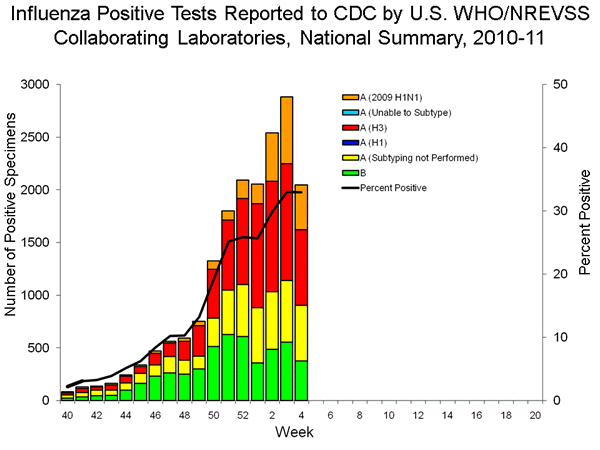

Paradigm Shift Intervention Monitoring
 twitter
twitter

Commentary
CDC
Silence On
Unsubtypables Raises trH3N2 Pandemic Concerns
Recombinomics
Commentary 14:40
February 9, 2011
Samples that were influenza A positive but unsubtypable were common in the spring and summer of 2009, when pandemic H1N1 was emerging. Such samples would be positive for influenza A, but negative for seasonal H1n1 because pandemic H1N1 was of swine origin and the swine H1 failed to react with subtyping reagents directed against human sequences. These samples were sent to the CDC for testing, and reagents targeting swine H1 indicated the virus was of swine origin, which was confirmed by sequencing isolated virus. The large number of cases created a backlog and initially states did not have the reagents to subtype the swine isolates, so such samples were classified as unsubtypable samples that were influenza A positive. The CDC subsequently distributed the appropriate test kits for swine H1N1 and subtyping was and is done at the state level, although the test were initially rationed, and states typically only subtype a fraction of the influenza A positive cases.
Cases that are influenza A positive but unsubtypable are not limited to trH3N2. The same result would be generated by other novel influenza such as H7, which has been reported previous in the United States and Canada (as well as Europe), or H5 which has been found in Asia, the Middle East, or Africa. However, all recent novel influenza cases in the US have been trH3N2, and two of the seven cases have been in Pennsylvania.
Although the CDC has reported the seven trH3N2 cases, it has not addressed the unsubtypable cases reported by states, as seen in the graph below, or in the table with the underlying data.

Although there is an unsubtypable column, none of the cases reported by the various states are listed, and the trH3N2 cases reported to date have been typable as seasonal H3N2. However, as the levels of seasonal H3n2 decline, the conditions favoring the emergence of trH3N2 would increase, which might explain the recent increases in unsubtypable cases, especially in Pennsylvania where there have been two confirmed human cases as well as two confirmed swine cases which were closely related to the human case in October. However, the human case in October has denied contact with swine, increasing concerns that the trH3N2 in Pennsylvania is casually transmitting human to human, which is supported by the sequence data from the four cases reported from 2010 (two cases in MN, one in WI, and one in PA – there is no public sequence data from the second case in PA).
The failure of the CDC to acknowledge and address the unsubtypable cases previously reported by multiple states increases pandemic concerns.
Details on these cases are long overdue.
Media link
Recombinomics
Presentations
Recombinomics
Publications
Recombinomics
Paper
at Nature Precedings